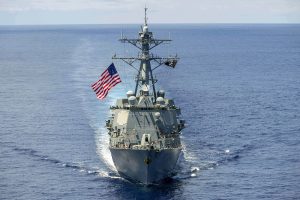As the Chinese People’s Liberation Army Navy (PLAN) closes the gap with the U.S. Navy, how can the United States optimize its maritime partnership programs?
The consulting firm Wikistrat (where I am a senior analyst) recently ran a simulation on how the United States could better leverage existing maritime partnerships, as well as develop productive new relationships. The simulation included members of a variety of organizations inside and outside the United States, and expected participants to play roles from both U.S. and international perspectives.
The primary purpose of the U.S. Navy since the end of the Cold War, and to great extent during the Cold War, has been the preservation of the global network of social and economic interaction that has helped undergird the system of alliances that has provided for U.S. physical and economic security.
This project is inherently collaborative in nature, involving cooperative relationships with a wide array of navies, coast guards, and other maritime actors. While the collaborative nature of U.S. naval power found its most evocative expression on the Cooperative Strategy for 21st Century Seapower, they key elements have been present in American naval practice since at least World War II.
While the simulators acknowledged the difficulties posed by Russian resurgence and by continued competition in the Persian Gulf, the exercise focused most on the prospect for the further development of partnerships in the Indian Ocean and the Western Pacific. Targets for new and enhanced partnerships included Vietnam, India, Japan, and Australia, as well as the other claimants to the South China Sea.
Given the strength of already existing relationships with Japan and Australia, the prospects of gains from greater cooperation with India and Vietnam stand out. With respect to the latter, U.S. cooperation can provide the Vietnamese People’s Navy with many of the key assets (especially in ISR) that it requires to plausibly deter the PLAN. Cooperation also enables the U.S. Navy to provide a model of maritime professionalism for the growing Vietnamese People’s Navy. With regard to India, the prospects for cooperation are virtually endless; the United States and India have only begun to probe what collaboration can accomplish in technology, naval aviation, and undersea warfare.
The simulation could have gone into greater detail on topics other than the South China Sea. For example, while NATO provides an effective foundation for maritime partnership in the Atlantic, the United States could still potentially see gains from working more closely with both NATO and non-NATO partners. The report briefly mentions partnerships with non-state actors (including a variety of private industries), but doesn’t focus on them with sufficient analytical detail. Nevertheless, the simulation represents a good start on how to think about making U.S. maritime partnerships more effective.

































